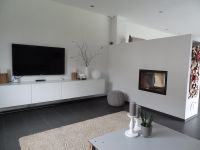Please let me know where you think the sockets should be located in the living room, on the wall where the TV will be.
The room is rectangular and the TV wall is 3.5 meters wide
Sample photo of the cabinet layout I would like. I would like to place the row of cabinets above the TV.
Click the image to get a larger version

Name: aaaaaaaaaaaaa.jpg
Views: 0
Size: 85.4 KB
ID: 390751
1) Should I give electrical contacts - RTV - ethernet under cabinets and plug the cable?
2) Contacts to give behind the TV? next to? How does it look like now with these flat TVs
The room is rectangular and the TV wall is 3.5 meters wide
Sample photo of the cabinet layout I would like. I would like to place the row of cabinets above the TV.
Click the image to get a larger version

Name: aaaaaaaaaaaaa.jpg
Views: 0
Size: 85.4 KB
ID: 390751
1) Should I give electrical contacts - RTV - ethernet under cabinets and plug the cable?
2) Contacts to give behind the TV? next to? How does it look like now with these flat TVs


